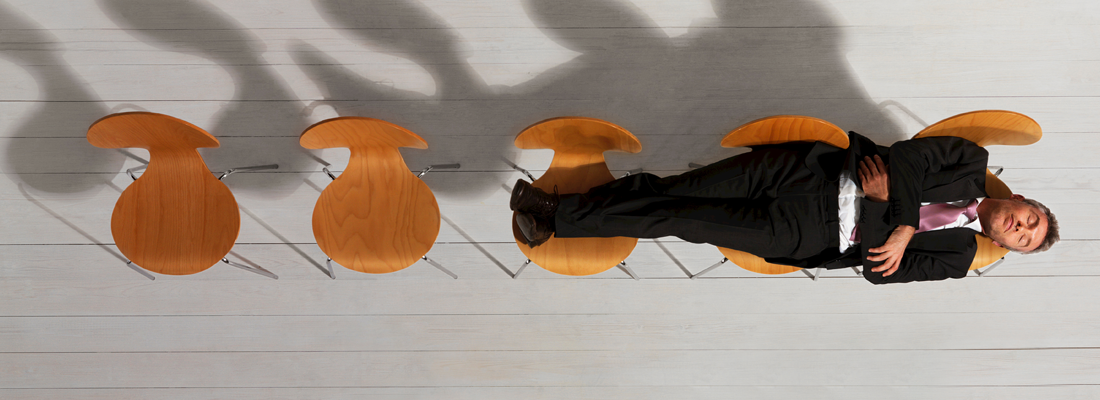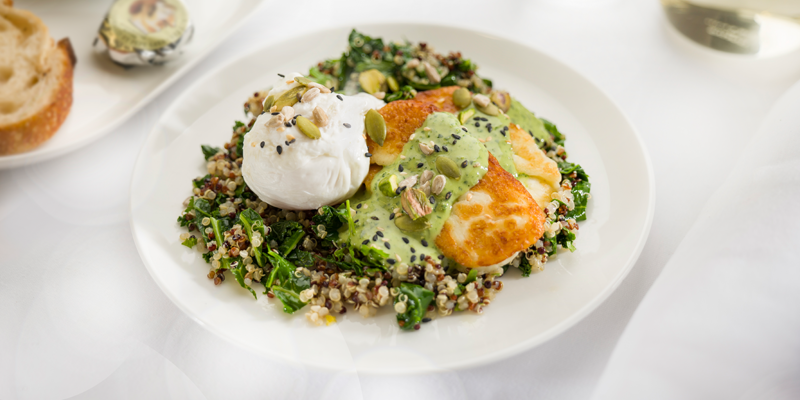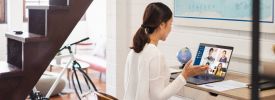
Reading time: 4 Minutes
Traversing time zones may be a natural part of working flexibly today, but with it comes the question of how to cope with jet lag. Here, aviation writer Paul Sillers explores remedies to mitigate the effects
Ultra-long-haul routes are proliferating thanks to the latest airliners, which fly further using less fuel due to their construction from lightweight composite materials. New non-stop services include Qantas’s recently inaugurated 17-hour Perth-London route(1), Qatar Airways’ 17-hour, 40-minute Doha-Auckland flight(2), and Singapore Airlines’ 18-hour, 45-minute Changi-Newark service launching this October.(3)
World-shrinking flights are vital for penetrating new markets by allowing people to actually be there, shake hands, and cultivate relationships. But the efficiencies of ultra-long-haul treks are only meaningful if the human cargo arrives in good shape – for crossing time zones, especially when travelling eastwards, throws our bodies out of sync.
With symptoms including confusion, anxiety, dizziness, dehydration, nausea and indigestion(4), it’s no surprise that some executives are even forbidden from making business-critical decisions if they’re jet-lagged. There’s a quantifiable impact: according to a joint study by Kayak and Airbus, the “reduction in productivity caused by jet lag … cost UK businesses £241m over the past 12 months.”(5)
Jet lag 101
The science(6) behind how our body clocks work points to some remedies: ganglion cells in our retinas detect light, or lack of it, pinging this information to the brain’s suprachiasmatic nucleus, which controls circadian rhythms. “In the evening, when light is less intense and higher in red content, our brain releases melatonin, which is the precursor to sleep and helps our bodies wind down. But, when travelling to different time zones, our sleep cycles become unsynchronised, and this is what is referred to as jet lag,” says Dr Lauren Fleming, senior research and development scientist at specialist aircraft cabin-lighting manufacturers STG Aerospace.(7)
But trying to resynchronise the body’s circadian rhythms by popping melatonin pills to help you doze off, or overdosing on espressos to stay awake, can have unwanted side-effects. Official NHS advice is that “melatonin supplements aren’t recommended for jet lag because there isn’t enough evidence that they work.”(8) Ergo, the main factor in alleviating jet lag is controlling exposure to light.
Remedies in the pipeline
Over the past decade, LED lighting in passenger cabins has offered ambient sunsets or sunrises to promote sleep or to prompt awakening, but plane-makers are now trying to take this further. Boeing has a patent(9) on “technology that provides a customised ambient lighting environment for travellers that can be automated or manually adjusted for the provision of light that closely simulates the ambient light exposure in a desired time zone”.(10)
The idea is that passengers will be able to set the lighting around their individual seat to “mitigate circadian desynchrony”, providing a personalised time-adjustment solution. There’s no indication as to if or when the concept might be implemented. Meanwhile, other solutions are at hand.
There’s an app for that
Tailoring your travel plans to a light-exposure regime may sound like a nightmare, but your smartphone or fitness watch could help do the job for you. Various mobile digital solutions profess to have some form of scientific or academic endorsement, providing schedules for sleeping and eating a few days prior to travel.
FitBit(11) advises users to “adjust your bedtime by one or two hours, depending on the direction in which you’ll be traveling” and to “set a new bedtime reminder in your Fitbit app so you know when to start winding down.”(12)
Entrain(13) is a “free app that connects users to lighting schedules developed by researchers at the University of Michigan – mathematically proven to adjust you to new time zones as quickly as possible”. Its designers claim that, by recording your lighting history, “we can simulate your body’s clock and make recommendations for behaviour”.
Timeshifter(14) is a paid service offering individual jet-lag plans “developed with Harvard Medical School Associate Professor Steven Lockley, based on the latest research in sleep and circadian neuroscience”.
A numbers game
Next time you fly, look for the magic numbers – A350(15) and B787(16). Airbus and Boeing say that the carbon composite construction of these planes allows cabins to be pressurised to 6,000 feet rather than the standard 8,000-feet atmosphere, reducing dehydration, a contributory factor in the jet-lag equation.
Qantas has created a new inflight menu designed to aid sleep and reduce jet lag
Food for thought
Light governs your body clock, but the digestive system also has its own preferred routines(17), which airlines are factoring into their catering strategies, and which can be taken into account when booking flights. On its non-stop Perth-London route, Qantas enlisted nutritionists and metabolic scientists to create “new menu options using ingredients that have added benefits of hydration, aiding sleep and reducing jet lag,”(18) says Neil Perry, the airline’s creative director of food, beverage and service.
Qantas has been trialling these new menus with its frequent flyers “using wearable technology and apps to collect data on sleeping and activity patterns, mental state, eating patterns and hydration before, during and after their long-haul flight”. Menu highlights include Probiotic Bc30-infused Botanica juice shots and a “bedtime drink containing the sleep-inducing amino acid tryptophan to help prompt the body’s sleep cycle”.
Elsewhere, airlines offer pre-flight meals enabling passengers to maximise sleep soon after take-off. For example, Japan Airlines’ new early morning Tokyo-London route(19) serves food and drinks before boarding in the JAL Sakura Lounge at Haneda Airport.
Coordinating both cabin lighting and food, and currently developing a passenger anti-jet-lag app is Hamburg-based startup JetLite(20), which has a ‘chronobiological cabin lighting’ system installed on nine of Lufthansa’s Munich-based Airbus A350-900s, “designed to fit with the day- and night-time biorhythms of their passengers, providing warm light for relaxation and cooler light stimulation for more active phases”.
Between September and December, the airline’s business-class frequent flyers participated in a survey that gleaned feedback from their experience of the lighting system’s effectiveness against jet lag. “The results were even better than expected,” according to JetLite’s business development manager Iwana Johannsen.
Of course, for most business travellers, choice of aircraft, airline, when food is served and controlled exposure to light before a flight are often factors beyond their control. But, as more and more airlines and plane manufacturers are aligning the inflight experience to their passengers’ body clocks, there is at least a growing range of jet-lag remedies out there to help us catch up with ourselves.
Paul Sillers is an aeronautics-industry features writer and author of International Business Etiquette 20:20
Sources:
(1) https://www.qantasnewsroom.com.au/media-releases/qantas-starts-history-making-flight-direct-to-london/
(2) https://www.qatarairways.com/en/destinations/flights-to-auckland.html
(3) http://www.singaporeair.com/en_UK/media-centre/press-release/article/?q=en_UK/2018/April-June/ne2018-180530
(4) https://www.medicinenet.com/jet_lag/article.htm#how_long_does_jet_lag_last
(5) https://www.kayak.co.uk/news/jet-lag-costs-brits/
(6) https://patient.info/doctor/pineal-gland-and-circadian-rhythms#nav-2
(7) https://www.stgaerospace.com/
(8) https://www.nhs.uk/conditions/jet-lag/
(9) https://patents.google.com/patent/US9493112B2/en
(10) http://www.boeing.com/features/innovation-quarterly/may2017/feature-technical-patent-spotlight.page
(11) https://blog.fitbit.com/jet-lag-cures/
(12) http://help.fitbit.com/articles/en_US/Help_article/1314?q=bedtime+reminder&l=en_US&fs=Search&pn=1#reminder
(13) http://entrain.math.lsa.umich.edu/
(14) https://www.timeshifter.com/eliminate-jet-lag-and-arrive-ready-for-business
(15) http://www.airbus.com/newsroom/press-releases/en/2015/10/airbus-launches-new-ultra-long-range-version-of-the-a350-900.html
(16) https://www.britishairways.com/en-gb/information/about-ba/fleet-facts/boeing787-9
(17) https://www.ncbi.nlm.nih.gov/pmc/articles/PMC5483233/
(18) https://www.qantasnewsroom.com.au/media-releases/qantas-unveils-menu-to-help-reduce-jetlag-on-long-haul-flights/
(19) https://www.raconteur.net/sponsored/on-the-dot-doubled
(20) https://www.jetlite.de/



